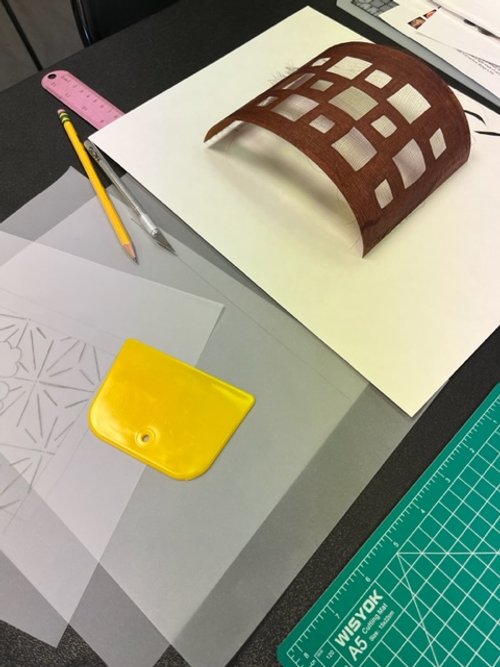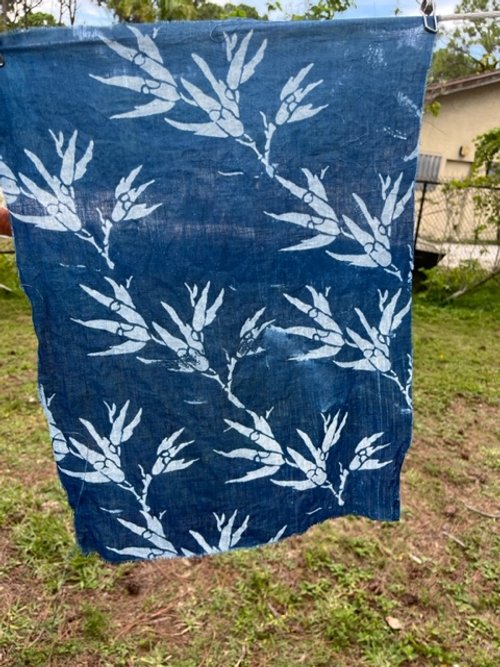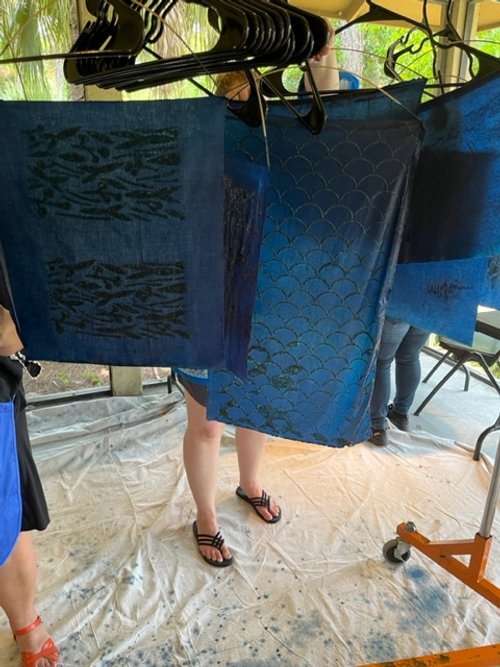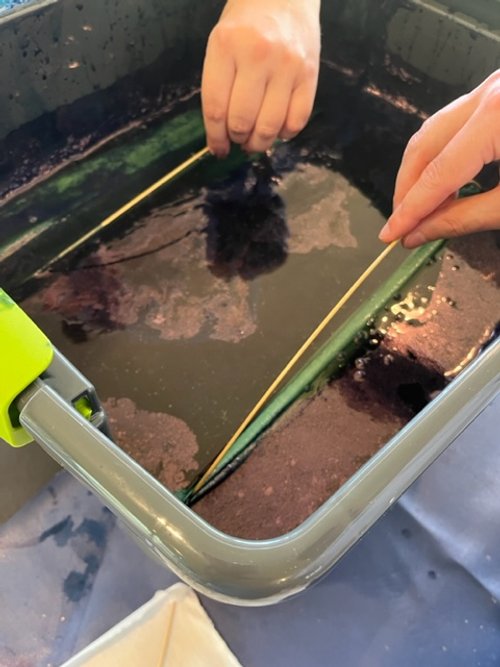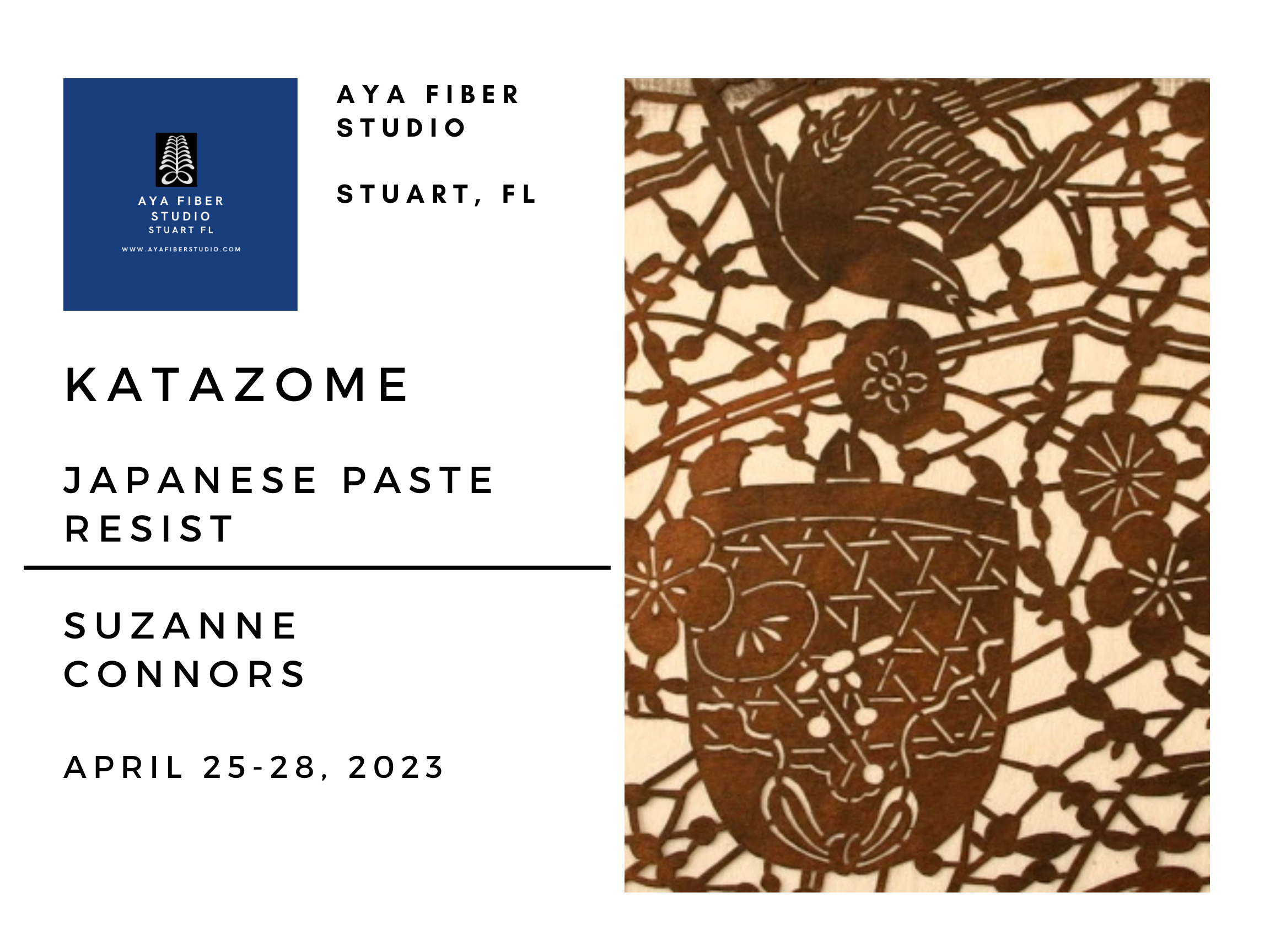Calendar of upcoming events.
Click on the Image for more Info

Katazome- Japanese Rice Paste Resist
The traditional Japanese art of katazome is ancient. Kata means stencil and zome is a form of the word someru which means to dye- hence katazome (stencil dyeing)
The basic process of stencil dyeing is not complicated. First, a stencil is cut and placed on a piece of fabric. Next resist paste is applied through the stencil.
The stencil is then removed, and the pasted fabric is allowed to dry in the sunlight. Fabric is then treated with sizing if going to be dyed with pigments. Fabric is then indigo dyed or the color pigments brushed on.
Finally, the fabrics are soaked in water to remove the paste.
The steps of creating Katazome must be followed in sequence, and timing is essential.

PATTERNING THE PATTERNS with Amy Nguyen-
PATTERNING THE PATTERN
Art may be considered man-made order or structure, while craft contains the accumulation of technical skill in daily practice. Both are necessary for the creative exploration of pattern and form.
Understanding the elements and principles of art through playful technical exercises in surface design and stitching will allow for creative freedom in making textiles for the body or home. We will explore surface design and structural techniques with brush, dye, paper, cloth, scissors, needle, and thread. Journals encouraged.
We will utilize natural fibers and both man-made and natural dyes to resist dyeing and printing. Honing our visual language and creating a textile pattern will be possible through further experimentation of elements such as line, shape, color, value, and texture and exploring size, scale, repetition, rhythm, and balance. We may further develop our textile with a historic pattern shape in mind, such as the beautiful kimono. A variety of seam construction and finishing techniques will be demonstrated.
https://ayafiberstudio.corsizio.com/event/65ec86153112f8c7e74634a7

Katazome: Japanese Paste Resist with Suzanne Connors
The traditional Japanese art of katazome is ancient. Kata means stencil and zome is a form of the word someru which means to dye- hence katazome (stencil dyeing)
The basic process of stencil dyeing is not complicated. First a stencil is cut and placed on a piece of fabric. Next resist paste is applied through the stencil. The
Stencil is then removed, and the pasted fabric is allowed to dry in the sunlight. Fabric is then treated with sizing if going to be dyed with pigments. Fabric is then dyed or the coler pigments brushed on.
Finally, the fabrics soaked in water to remove the paste.
The steps of katazome must be followed in sequence, and timing is essential.

Katazome: Japanese Paste Resist with Suzanne Connors
The traditional Japanese art of katazome is ancient. Kata means stencil and zome is a form of the word someru which means to dye- hence katazome (stencil dyeing)
The basic process of stencil dyeing is not complicated. First a stencil is cut and placed on a piece of fabric. Next resist paste is applied through the stencil. The
Stencil is then removed, and the pasted fabric is allowed to dry in the sunlight. Fabric is then treated with sizing if going to be dyed with pigments. Fabric is then dyed or the coler pigments brushed on.
Finally, the fabrics soaked in water to remove the paste.
The steps of katazome must be followed in sequence, and timing is essential.

